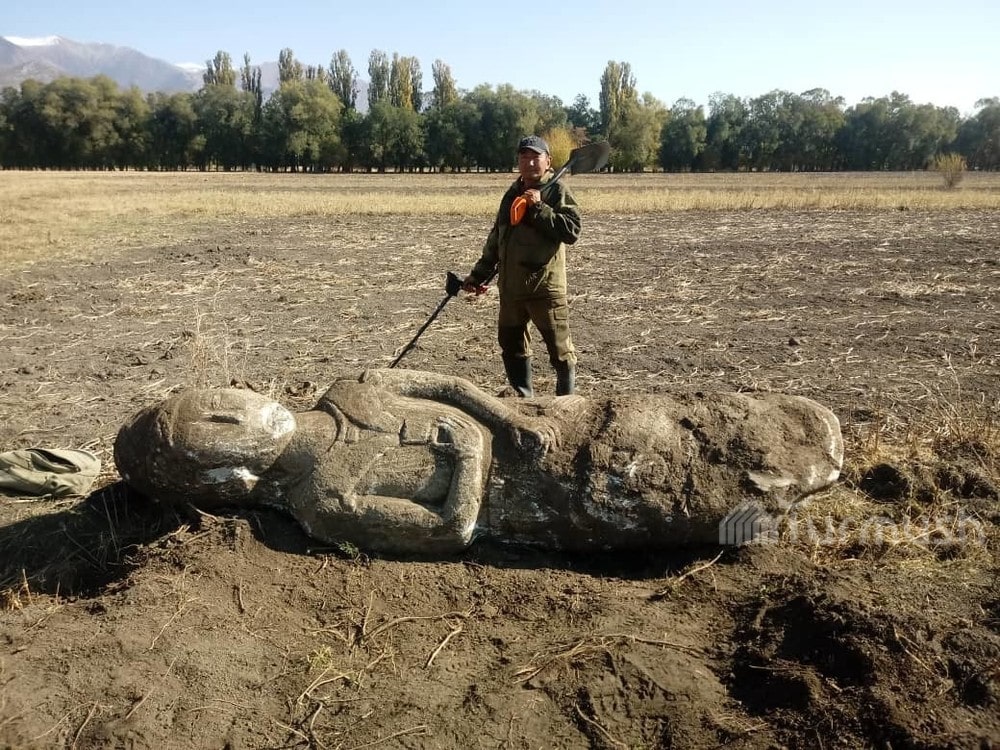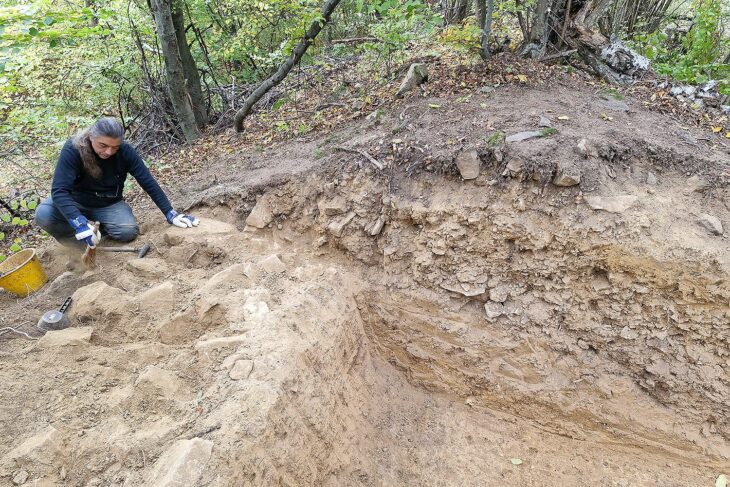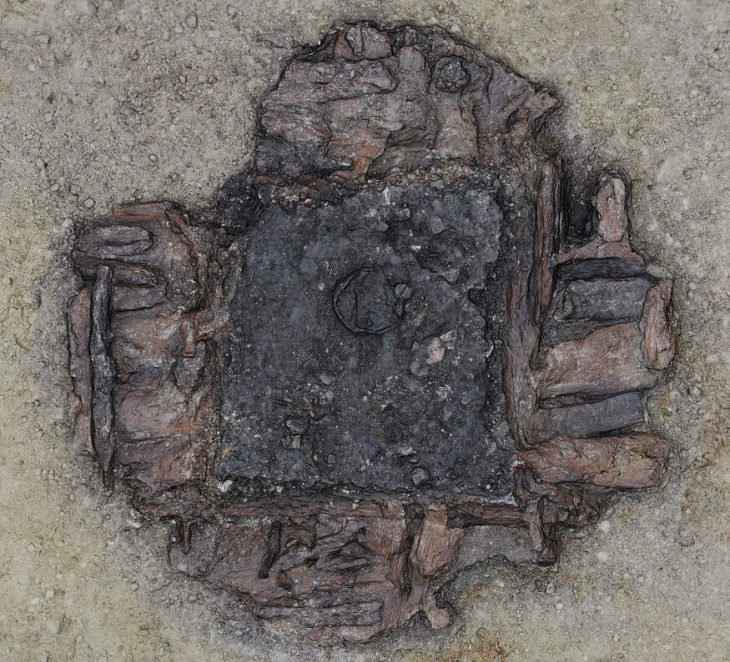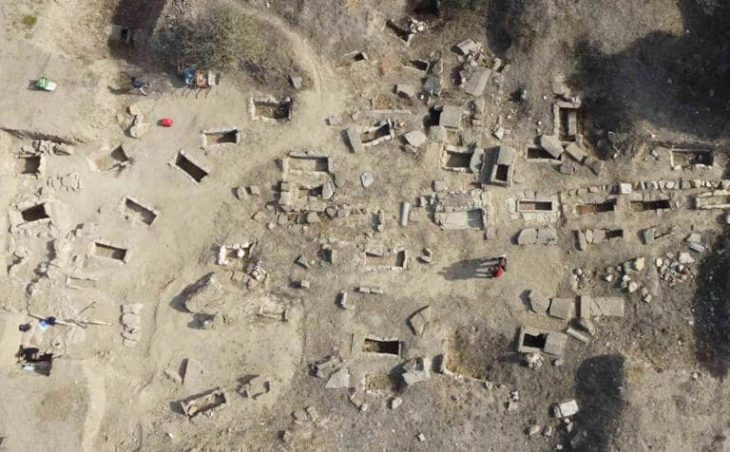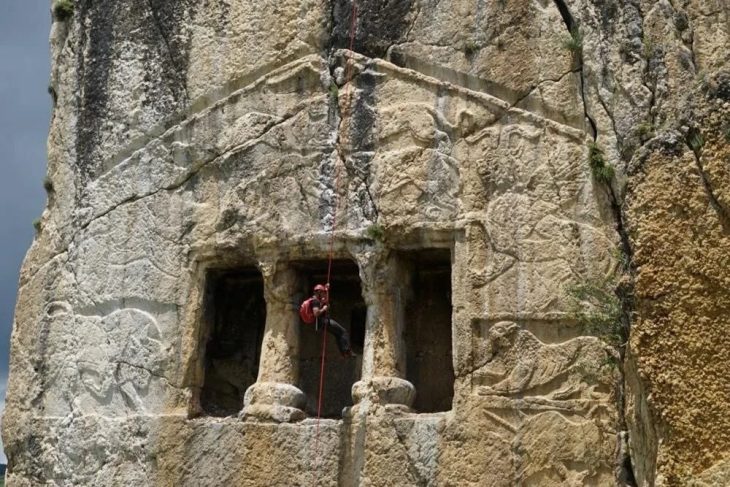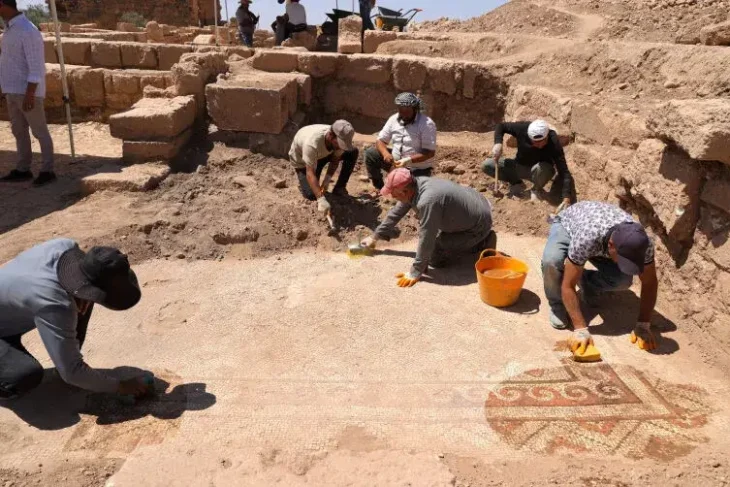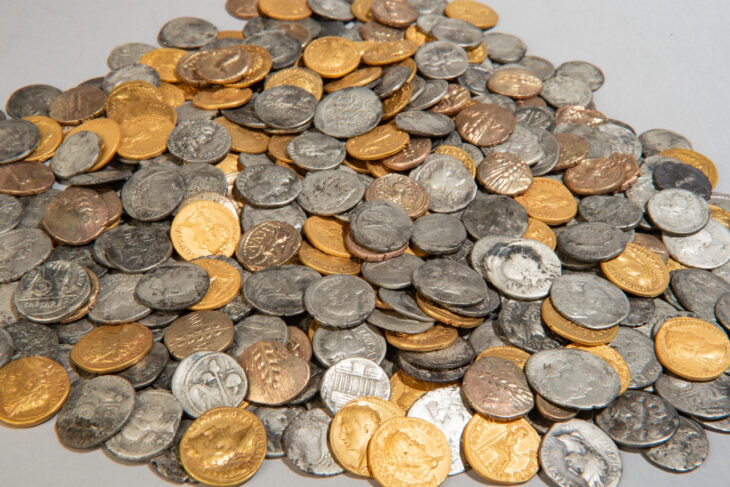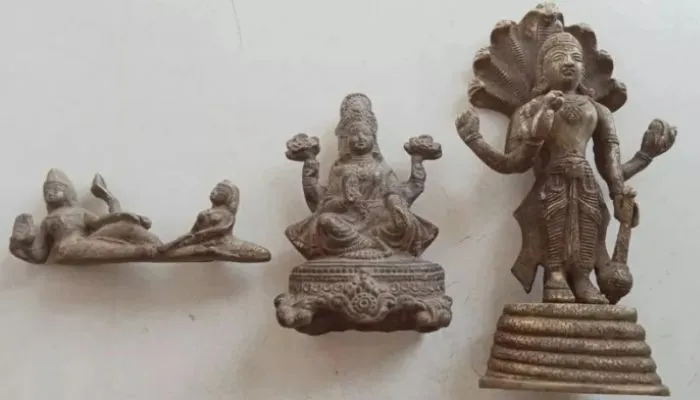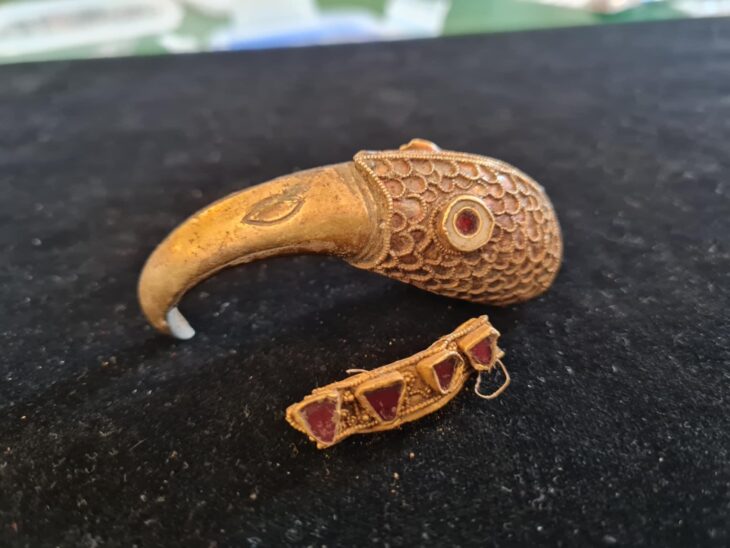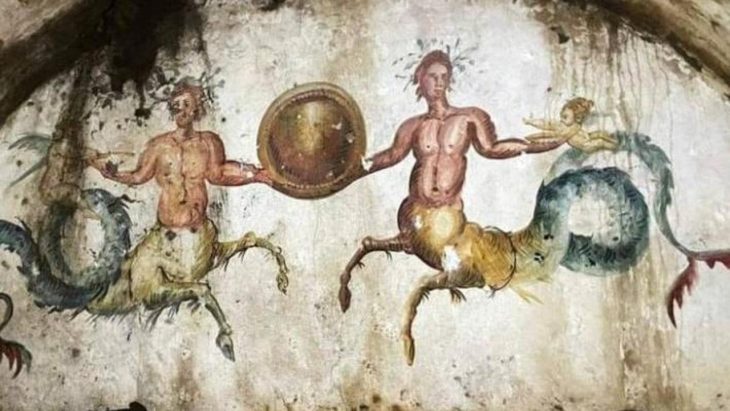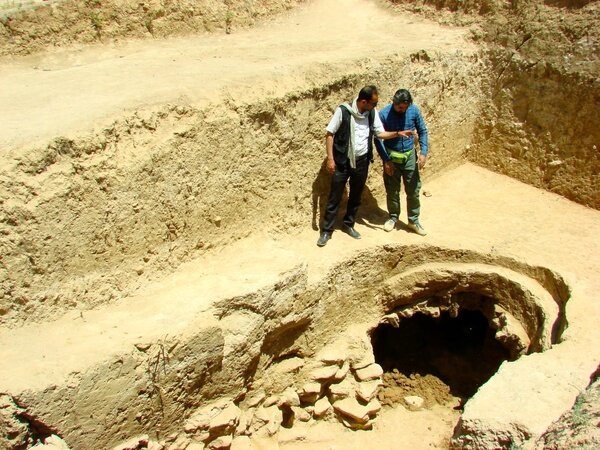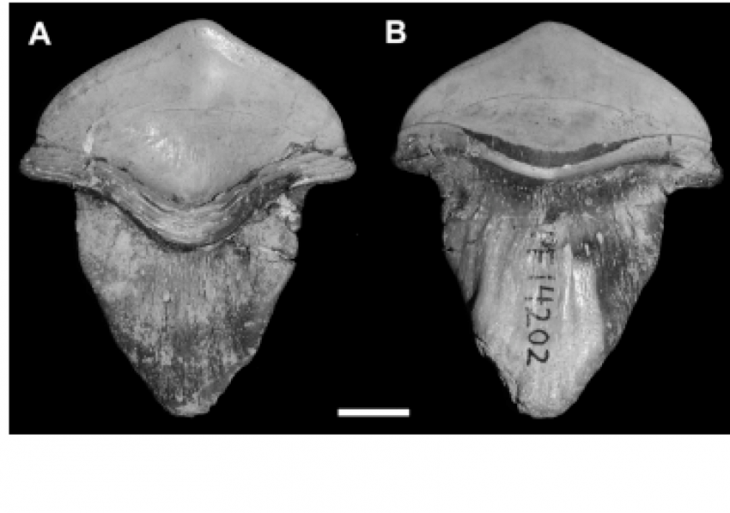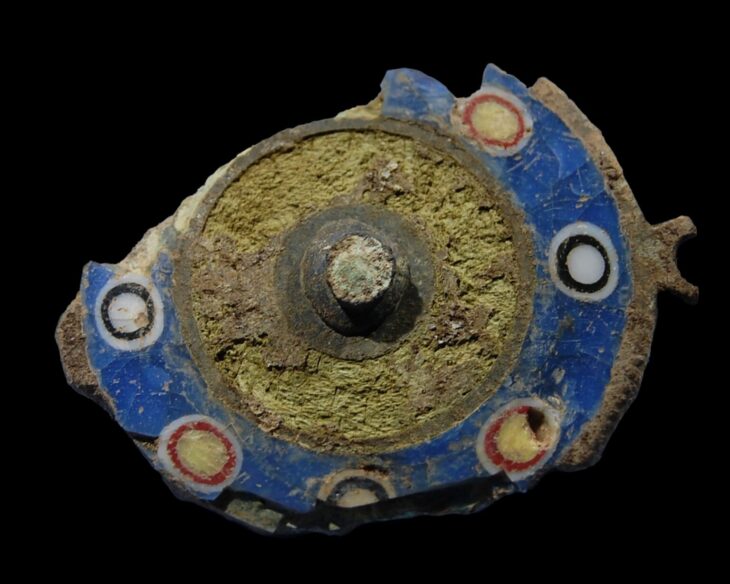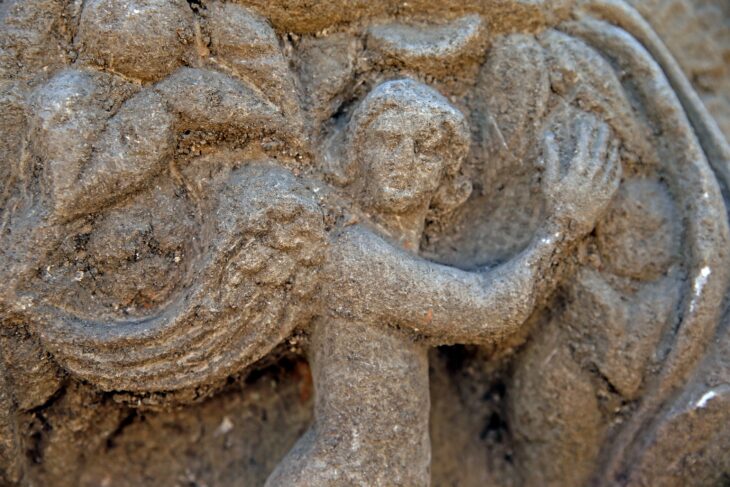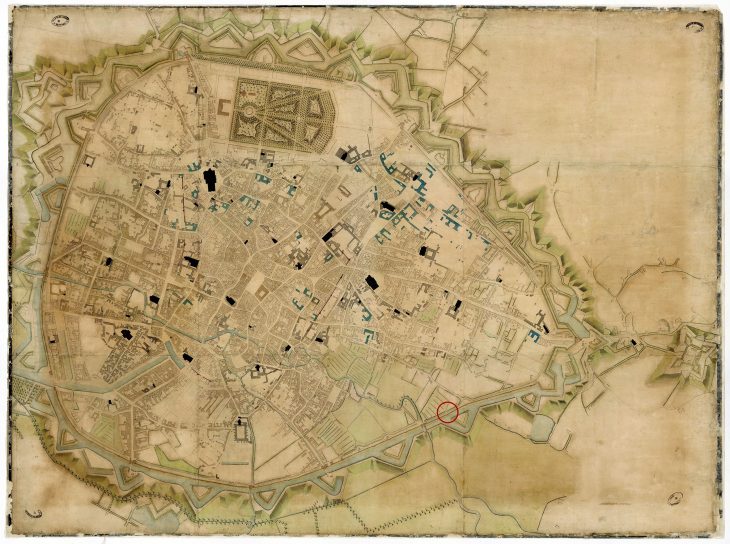A balbal (stone statue) with a height of up to 3 meters was found during agricultural work in the Ak-Bulun village of Tyup district in the Issyk-Kul region of Kyrgyzstan.
Balbal, is the name given to the tombstone that was erected around the grave or some of the kurgan people for the memory of the person in ancient Turks.
Erkin Turbaev, 60, discovered the balbal on October 15 in the evening. When the plow suddenly broke on something, he was preparing to plant potatoes. Turbaev made the decision to dig it out and discovered a more than two-meter-long stone statue at a depth.
According to Turbaev, who leased 80 acres of land between the Ak-Bulak and Belovodskoye settlements, ” A great historical find for this village. It will bring good fortune.”
Many Balbals have been found in Kyrgyzstan before. Many stone warriors (balbals) of the nomadic Turks are found in Çolpan Ata and Karakol on the shores of Issyk Kul. It is estimated that the balbals were erected in the 6th century. These grave markers in Kyrgyzstan and throughout Central Asia were erected by nomadic Turkish tribes, and almost all of the balbals in Kyrgyzstan are distributed in the Chuy Valley.
📣 Our WhatsApp channel is now LIVE! Stay up-to-date with the latest news and updates, just click here to follow us on WhatsApp and never miss a thing!!
The Balbals to the sculptures of the Central Asian Turks, usually in the form of a sword and figure, usually carved on a piece of stone, symbolizing the enemies that the warrior had killed, and the people believed to be his servants in the other world, planted around the tombs of the deceased warriors at the time of widespread preservation of the validity of the shamanic religion.
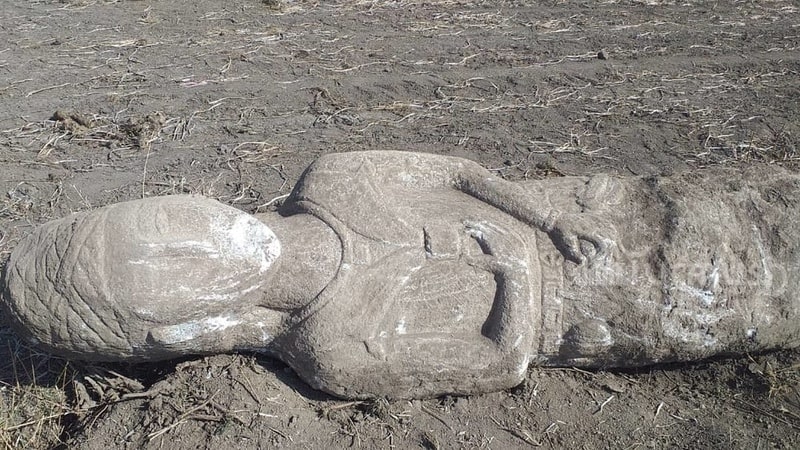
When the number of these stones is the right of the dead person; the power, the courage, the hero of the hero. The balbals, which is prevalent in the pre-Islamic period, left its place to gravestones after acceptance of Islamic religion. Balbal word is a word from the Old Turkic language and means, to strike. However, the meaning of the word is disputed.
The stone balbals in Kyrgyzstan, which are located on the outskirts of the townships of Sai and Bulak villages, are exhibited in the Kara-Batkak museum.
Historian Zhanbolot Abdykerimov said that many historical monuments can be located on the territory of the rural municipality.
“There are historical kurgans (burials) that date back to the 3rd century BC between the settlements of Ak-Bulun and Frunze. There are such kurgans in Fergana and Almaty. There is historical evidence that the ancient city of Sarybulun [Chigu or Chiguchen – in Chinese sources, the “City of the Red Valley”] was in the eastern part of Issyk-Kul,” the historian noted.
According to Abdykerimov, that the statue has special marks: inscriptions on the head, a pendant in the neck area and a hand in the middle indicating belonging to some title. There are pictures on the back and a belt. A short sword similar to an akinak is drawn. Such weapons were actively used during the Saka period. It is difficult to determine without archaeologists to which period the balbal belongs, the historian noted.
Balbal, which was slightly damaged by tractor drivers during excavations, is 2 meters 70 centimeters long. It was stated that such stone sculptures had not been encountered before in the village.

